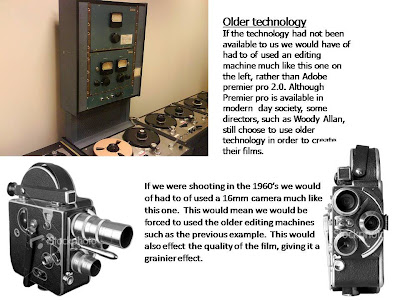Postwar crime films, whatever formula they adopted, were shaped in America by cultural anxiety about the nuclear bomb ( Kiss Me Deadly , 1955) and the nuclear family ( The Desperate Hours , 1955). The decline of film noir after Touch of Evil (1958) was offset by a notable series of crime comedies at England's Ealing Studios (such as The Lavender Hill Mob

, 1951) and a masterly series of psychological thrillers directed by Alfred Hitchcock ( Strangers on a Train , 1951; Rear Window , 1954; Vertigo [left] , 1958; North by Northwest , 1959; Psycho , 1960). The 1960s was the decade of the international spy hero James Bond, who headlined history's most lucrative movie franchise in a long series beginning with Dr. No (1962). But it was left to a quartet of ironic valentines to retro genres, Bonnie and Clyde (1967), The Godfather (1972), The Godfather: Part II (1974), and Chinatown (1974), to reinvent the crime film for a hip young audience. The replacement of the 1930 Production Code by the 1969 ratings system allowed niche films to be successfully marketed even if they were as graphically violent as Henry: Portrait of a Serial Killer (1990) or as bleak in their view of American politics as The Parallax View (1974) or JFK (1991). Th

e closing years of the century, marked by a heightened public fear of crime, a fascination with the public-justice system, and a deep ambivalence toward lawyers, allowed a thousand poisoned flowers to bloom around the globe, from the sociological sweep of the British television miniseries Traffik (1989), remade and softened for American audiences as Traffic (2000), to the ritualistic Hong Kong crime films of John Woo ( Hard boiled [ poster on the left]) and Johnny To ( Dung fong saam hap [The Heroic Trio], 1993) and their American progeny ( Pulp Fiction , 1994), to the steamy eroticism of the all-American Basic Instinct (1992) and its direct-to-video cousins. Perhaps the most distinctive new strain in the genre has been the deadpan crime comedy of Joel (b. 1954) and Ethan (b. 1957) Coen, whose films, from Blood Simple (1985) to The Ladykillers (2004), left some viewers laughing and others bewildered or disgusted.
Themes
· Rivalry- usually with other criminals. Often regarding money, pride or loyalty or gang hate.
· Morality- as religion is used as a key aspect, usually used as dramatic irony or to highlight their lack of morals. This can be seen in films such as Goodfelles.
· Betrayal- huge theme of giving up information to crime families or police. Can be to do with frustration or most commonly, will go to prison otherwise
· Fierce ambition- protagonist is usually full of desire, sometimes resulting in his death or attaining ultimate power
· Materialism- most focus on material aspects, for example cars represent ultimate fantasyof rags to riches
· Self destruction- obtain everything they desire but they become complacent and bored, leading to a big downfall
· Evil- the protagonist can appear evil, clinical and sinister as death is portrayed as a business with no care or doubt
· Loyalty- undying loyalty between the mob, shown with how they consider them to be ‘family’, such as The godfather.
Symbols are used throught the crime genre. Here are the key ones :
· Money, epitomizes materialism and a crime films ultimate desire.
· Guns and ammo, represents violence and most prevalent weapon used in a crime film
· Police, represent the law which is everything the mob hates and fights against, epitomize the ultimate enemy
· Locations, the two main styleof location are poler extreams. Most crime films are ether set in hot, sunny America ( such as the film True Romance) or dirty back allys and streets (such as trainspotting).

















































